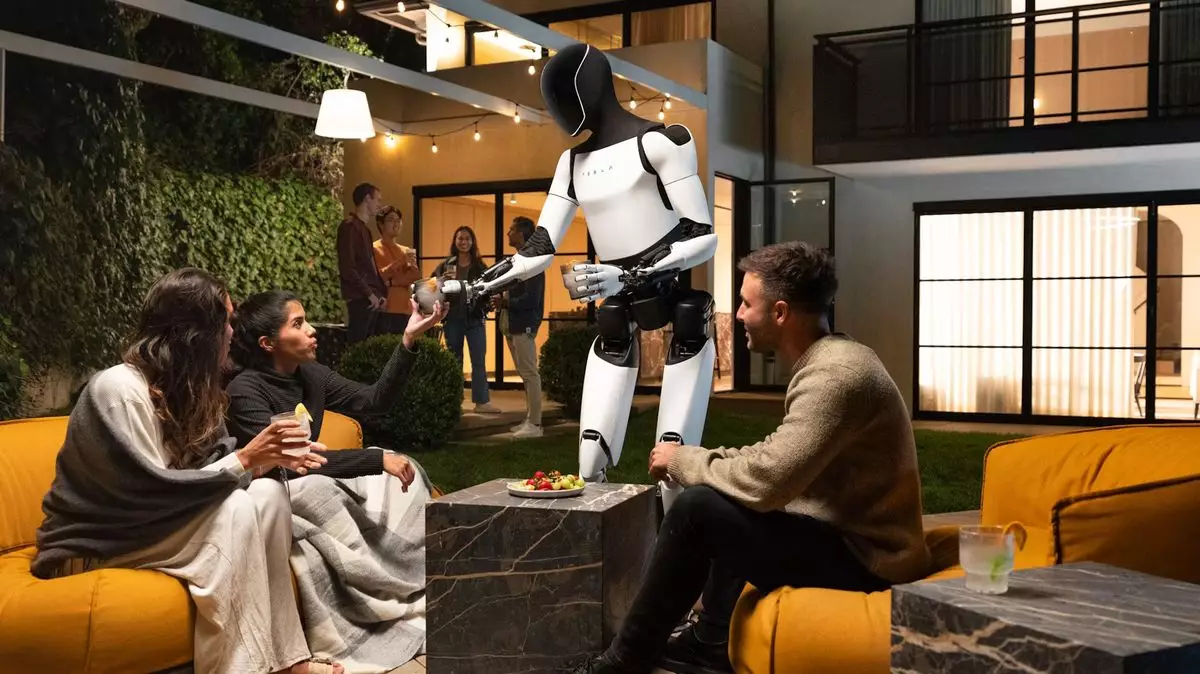In 2021, Elon Musk introduced the world to his vision of a humanoid robot, creating substantial buzz in both tech circles and mainstream media. However, that initial reveal turned out to be less than revolutionary, as it showcased little more than a man clad in a suit. Fast forward to 2022, and a prototype emerged, allowing us a glimpse at what the actual product might resemble, albeit still slow and somewhat clumsy in its movements. The recent event titled “We, Robot” unveiled multiple Optimus units that claimed remarkable functionalities. But amidst the excitement, one has to critically assess whether these innovations are genuinely groundbreaking or simply a façade.
During the recent presentation, Musk made some lofty claims about Tesla’s Optimus robots, saying things like, “It can walk your dog, mow your lawn, get the groceries, and even be your friend.” While the aspirations are commendable, such extravagance requires a thorough examination. The notion that a robot could seamlessly integrate into daily routines, carrying out tasks that often require nuanced human judgment, raises eyebrows. Musk’s statement seemed not only optimistic but also detached from the realities of robotic technology. The world of robotics is rife with challenges, and many of these tasks involve complex interactions that are currently beyond the reach of even the most advanced AI systems.
The concept of a widely coveted “Optimus buddy” is intriguing, especially when Musk claims that every individual on Earth would want one. However, one has to question the practicality of this vision. Are we overlooking the technical limitations and social implications of deploying such technology in everyday life? It’s easy to conjure images of a fleet of friendly robots attending to our needs, but the actual development of this technology is far from being realized. Even if the technology exists, scaling it for mass use would entail a plethora of hurdles, both morally and logistically.
What stood out during the event was how Musk emphasized that the Optimus robots would not simply be pre-programmed machines. They were to walk among the audience and actively participate in interactions. Yet, reports emerged suggesting that these robots were controlled manually by Tesla employees, taking some sheen off the grand display. If the so-called “autonomous” robots are merely puppets operated remotely, it begs the question: was this transparency missing on purpose? Tesla’s track record for making grand promises and failing to deliver exact truth calls into question the authenticity of Musk’s claims regarding the robots’ capabilities.
One cannot ignore the implications of marketing robots as more advanced than they may truly be. By not clarifying the extent of their autonomy, Musk risks not only causing public disillusionment but also raising ethical concerns about consumer trust in technological advancements. This ambiguity stands detrimental to the potential fostered excitement encircling Tesla’s innovations.
While progressive leaps in robotics are both exciting and somewhat inevitable, it’s critical to maintain a level-headed perspective. The future where robotic companions take on significant roles in human lives is certainly a tantalizing prospect. However, skepticism about timelines remains warranted, especially when drawing parallels to Musk’s many other ambitious aspirations—such as fully autonomous vehicles or colonizing Mars—that have yet to manifest.
Interestingly, despite the skepticism and media scrutiny, the allure of what Musk represents cannot be entirely dismissed. His ability to captivate audiences often overshadows the solid ground of actual capabilities in emerging technologies. Tesla and its ambitious undertakings on the robotics front serve as a reminder of how quickly visions of the future can become diluted by over-sell and reality.
The Tesla Optimus represents a microcosm of the broader conversation surrounding technology innovation. While optimistic, it requires careful consideration of the actual capabilities, ethical concerns, and technology’s limitations. Until then, we can enjoy the fantasy, but a cautious scrutiny must accompany this excitement as we navigate the complexities of revolutionizing human and robotic interactions.

